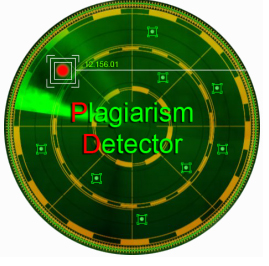EROTOMANIA AS SEEN IN PHILLIPS’ JOKER (2019)
Abstract
The aims of this research paper are to describe erotomania (De Clerambault’s Syndrome) as seen in the main character Arthur Fleck and its cause in the movie Joker (2019) by Todd Phillips. Here, the writer describes erotomania based on the characteristics based on Kelly’s theory (2005), which are seen in the selected scenes of the movie. Thus, in doing the research, the writer used the qualitative method. The data are taken from selected scenes from the movie and dialogues that are related to erotomania. In addition, the writer also used Metz’s semiotics of film theory (1992) in order to analyze the selected scenes that are correlated to erotomania. As a result of the findings, it indicates that the main character of Arthur Fleck in the movie Joker (2019) by Todd Phillips is possessing erotomania, or De Clerambault’s syndrome, which can be noticed from its five characteristics, namely: a delusional conviction of being in amorous communication with another person; the object is of higher rank; the sufferer believes that the object is the first to fall in love with him and the first to make advances; the object of the amorous delusions remains unchanged; and the sufferer thinks that they are not hallucinating. Moreover, the writer also found that the cause of Arthur’s erotomania is that he suffered a brain injury as a child.
Keywords: erotomania, film semiotics, psychological approach
Full Text:
PDFReferences
Abrams, M. H. 2012. A Glossary of Literary Terms. United States: Wadsworth.
Adillah, R. 2019. An Analysis of Delusion on The Leading Character Portrayed in Beth Revis’ Novel A World Without You. Medan: Universitas Sumatera Utara.
Afrianto, A., & Ma’rifah, U. 2020. Tubuh dan Relasi Gender: Wacana Pascakolonial Dalam Novel “The Scarlet Letter” Karya Nathaniel Hawthorne. LEKSEMA: Jurnal Bahasa Dan Sastra, 5(1), 49–63.
Amelia, D. 2021. Antigone’s Phallus Envy and Its Comparison to Indonesian Dramas’ Characters: A Freudian Perspective. Vivid: Journal of Language and Literature, 10(1), 23–30
Aryangga, Afri & Nurmaily, Ely. 2017. Women’s Power and Steorotype Denial in Pocahontas Movie. Teknosastik: Jurnal Bahasa dan Sastra, 15(1), 46-58.
Bennett, A., & Royle, N. 2016. An Introduction to Literature, Criticism and Theory. New York: Routledge.
Cipriani, G., Logi, C., & Di Fiorino, A. 2012. A Romantic Delusion: De Clerambault's Syndrome in Dementia. Geriatrics & gerontology international, 12(3), 383-387.
Faden, J., Levin, J., Mistry, R., & Wang, J. 2017. Delusional Disorder, Erotomanic type, Exacerbated by Social Media Use. HINDAWI: Case Reports in Psychiatry, 17, 1-2
Fitri, E., & Qodriani, L. U. 2016. A study on flouting maxims in Divergent novel. Teknosastik: Linguistics and Literature Journal, 14(1), 32–40.
Gofur. 2015. Island Film Based on Sigmund Freud's Psychoanalysis Theory. Jakarta: UIN Syarif Hidayatullah
Heaverly, A., & Kasih, E. N E. W. (2020). Jane Austen's View on the Industrial Revolution in Pride and Prejudice. Teknosastik: Linguistics and Literature Journal, 1(1), 1-6.
Hurley, A. D., & Moore, C. (1999). A Review of Erotomania in Developmental Disabilities and New Case Report. Mental Health Aspects of Developmental Disabilities, 2(1), 12-21.
Istiani, R., & Puspita, Dian. 2020. Interactional metadisocurse used in Bloomberg international debate. Teknosastik: Linguistics and Literature Journal, 1(1), 13-20.
Ivana, P. S. I., & Suprayogi, S. 2020. The Representation of Iran and United States in Donald Trump’s Speech: A Critical Discourse Analysis. Linguistics and Literature Journal, 1(2), 40-45.
Jordan, H. W., Lockert, E. W., Johnson-Warren, M., Cabell, C., Cooke, T., Greer, W., & Howe, G. 2006. Erotomania revisited: thirty-four years later. Journal of the National Medical Association, 98(5), 787.
Kardiansyah, M. Y. 2016. The Index of Hero’s Power and Nobility in Shakespearean Tragedy Drama: A Semiotic Study. Teknosastik: Linguistics and Literature Journal, 14(2), 11–17
Kelly, B. D. 2005. Erotomania. CNS Drugs, 19(8), 657-669.
Kuswoyo, & Susardi. 2016. Thematic Progression in EFL Students' Academic Writing: A Systematic Functional Grammar Study. TEKNOSASTIK: Linguistics and Literature Journal, 14(2), 39-45
Kuswoyo, Heri & Siregar, R. A. 2019. Interpersonal Metadiscourse Markers as Persuasive Strategies in Oral Business Presentation. Lingua Cultura,13(4), 297-304.
Latif, L. A., Tajik, E., Ibrahim, N., Bakar, A. S. A., & Ali, S. S. A.2017. Psychosocial Problem and its Associated Factors Among Adolescents in the Secondary Schools in Pasir Gudang, Johor. Malaysian Journal of Medicine and Health Sciences, 13(1), 35-44.
Muwana. 2017. De Clerambault Syndrome that reflected in Major Character in Steve Shill’s Movie “Obsessed”. Makasar: Alauddin State Islamic University
Putri, C. N., Nugroho, M. A. B., & Asikin, N. A. 2020. Psychological Analysis on Arthur Fleck in “Joker” Movie. In Proceedings of the 2nd International Conference on English Language Education (ICONELE) 2020.
Sari, F. M., & Oktaviani, L. 2021. Undergraduate Students’ Views on the Use of Online Learning Platform during COVID-19 Pandemic. Teknosastik: Linguistics and Literature Journal, 19(1), 41.
Sari, S. N., & Aminatun, D. 2021. Students’ Perception on The use of English Movies to Improve Vocabulary Mastery. Journal of English Language Teaching and Learning, 2(1), 16-22.
Sasalia, O. A., & Sari, F. M. (2020). Utilizing Novel in The Reading Class to Explore Students’ viewpoint of its Effectiveness. Journal of English Language Teaching and Learning, 1(2), 56–61.
DOI: https://doi.org/10.33365/llj.v4i1.1955
Refbacks
- There are currently no refbacks.
Linguistics and Literature Journal
Published by Universitas Teknokrat Indonesia
Organized by Faculty of Arts and Education
Jl. Zainal Abidin Pagaralam, No.9-11, Labuhanratu, Bandarlampung, Indonesia
Telepon : 0721 70 20 22
W : http://jim.teknokrat.ac.id/index.php/linguistics_and_literature/index










